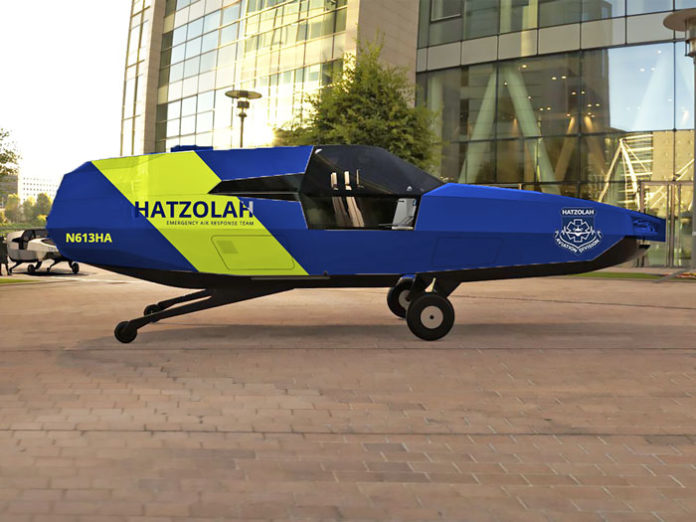The newest division of Hatzolah is looking to expand its capabilities even further. Hatzolah Air, the airborne division of Hatzolah, flew its’ maiden flight during September of 2019. Since then, they have completed over 185 medical, transplant and urgent flights, including transportation of 26 patients from Israel, for treatment in the United States.
Hatzolah Air has partnered with Urban Aeronautics Ltd., a leading Israeli aerospace company, staffed with pilots and engineers who are veterans of the IAF. Urban Aeronautics is currently in the final stages of development of a vertical take-off and landing CityHawk (VTOL) aircraft.
“This will be a game-changer for Hatzolah, especially in more densely populated cities such as NYC, Chicago, Los Angeles, London and Mexico City,” Eli Rowe, president of Hatzolah Air, told Ami. “It can take 45 minutes to an hour to get a patient to a hospital during rush hour. Unlike a car or ambulance, CityHawks can fly over traffic, land in an area the size of a large parking spot, and airlift patients to a hospital within minutes.
“It could also potentially change the protocols of patient transport. Right now, Hatzolah must bring a critical patient to the closest emergency room simply because travel time to a superior hospital could delay critically needed medical care. Many hospitals that are out of reach in the current environment will become viable options. It will enable us to transport patients with medical conditions to the best hospital suited for their care. For example, if there is trauma, we can bring the patient to the top trauma center, and a cardiac arrest would be transported to a Level 1 facility without adding time.”
Aside from its size, the VTOL aircraft’s design has advantages over regular helicopters, making it more suited for rescue missions. Helicopters often cannot fly in snowy or icy conditions. Instead of having rotors on the outside, CityHawk’s rotors are inside the chassis of the machine, allowing them to fly in any weather condition. Having the rotors inside the actual aircraft also allows them to navigate near buildings without risking danger to bystanders or having their rotors caught in structures.
“I keep wishing that we could have had these on 9/11; we could have flown directly up the sides of the building and possibly rescued the people who jumped,” Mr. Rowe says.





















